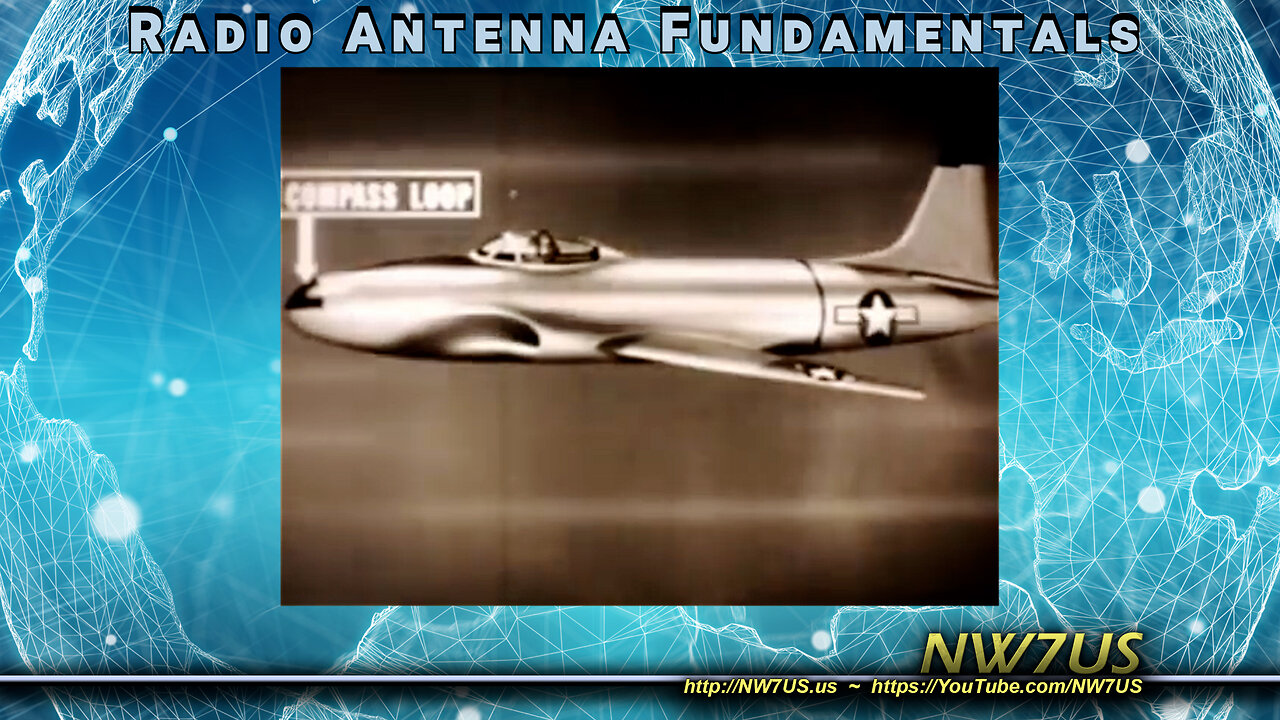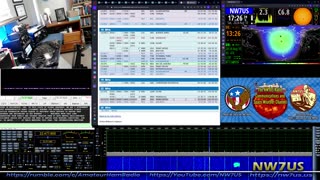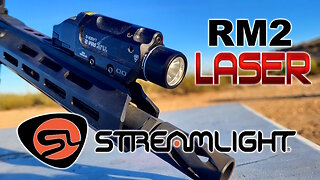Premium Only Content

Radio Antenna Fundamentals (Part 1 and 2) - 1947
Official Air Force Film, T.F.I. 4801 and 4802, Department of the Air Force
Produced by Wilding Picture Productions, Inc.
This is a United States Air Force black and white training film that came in two parts in 1947. This film deals with radio transmission systems converting electrical energy into radio waves.
In 1947, the fundamentals of radio antennas were well-established, building upon the knowledge developed in the early days of radio communication. Here are some key points regarding the fundamentals of radio antennas in 1947:
- Types of Antennas: In 1947, common types of radio antennas included dipole antennas, loop antennas, Yagi antennas, and horn antennas. Each type had specific applications based on their radiation patterns and gain characteristics.
- Antenna Design: Antenna design in 1947 focused on optimizing the size, shape, and orientation of the antenna elements to achieve the desired radiation pattern and gain. Engineers relied on mathematical models and empirical testing to refine antenna designs.
- Radiation Patterns: Engineers studied the radiation patterns of antennas to understand how radio waves were emitted and received. Radiation patterns were characterized by parameters such as beamwidth, directivity, and gain.
- Transmission and Reception: Radio antennas in 1947 were used for both transmitting and receiving radio signals. The efficiency of an antenna in transmitting or receiving signals was a key consideration in its design.
- Frequency Considerations: Antenna design in 1947 took into account the frequency of the radio signals being transmitted or received. Different antenna lengths and configurations were used for different frequency ranges to maximize performance.
- Matching Networks: Antennas were often connected to matching networks to ensure efficient transfer of power between the antenna and the radio transmitter or receiver. Matching networks helped minimize signal loss and impedance mismatch.
- Propagation and Reception: Understanding radio wave propagation and reception was essential in antenna design. Engineers considered factors such as ground reflection, atmospheric effects, and interference in optimizing antenna performance.
- Advancements in Technology: In 1947, advancements in materials and manufacturing techniques allowed for more precise antenna construction. The development of new technologies, such as radar and television, also drove innovation in antenna design.
Overall, the fundamentals of radio antennas in 1947 were rooted in a solid understanding of electromagnetic theory and practical experimentation. Engineers and scientists continued to refine antenna designs to improve the efficiency and reliability of radio communication systems during this period.
Please subscribe to my YouTube Channel: https://YouTube.com/NW7US
Also, please click on the bell, to enable alerts so that when I post a new video, you will be notified. By subscribing and making sure that the bell (alert) notification is set to ALL, you will be kept in the loop for new videos and more.
About me:
https://nw7us.us
Direct Support:
1. Donate - https://sunspotwatch.com/support.html
2. Become a Patreon Member - https://www.patreon.com/NW7US
Highlights: I am a contributing editor with propagation and space weather columns in The Spectrum Monitor - http://www.thespectrummonitor.com/
Social media:
X: https://X.com/NW7US (@NW7US)
Tumblr: http://blog.nw7us.us
Instagram: https://instagram.com/nw7us
Facebook: https://www.Facebook.com/NW7US
Facebook: https://www.Facebook.com/spacewx.hfradio
Copyright, Tomas Hood / NW7US
-
 16:07
16:07
Amateur Ham Radio Shortwave (LF, MF, HF, VHF, UHF, SHF) Communications + Space Weather
5 months agoHistoric Maritime Morse Code Station KPH on Shortwave - 10 August 2024
313 -
 11:57
11:57
inspirePlay
20 hours ago $8.18 earnedLongest Drive Wins! Elite Long Drivers Battle in Par 4 Elimination
65.8K12 -
 8:44
8:44
RTT: Guns & Gear
22 hours ago $5.13 earnedStreamlight TLR RM2 Laser - G | The Best PCC Light
51.8K4 -
 36:38
36:38
Athlete & Artist Show
1 month ago $3.11 earnedNCAA Hockey Was A Joke, TNT Hockey Panel Is The Best In Sports
40.5K2 -
 1:00:08
1:00:08
Trumpet Daily
1 day ago $5.93 earnedBanning Mystery of the Ages - Trumpet Daily | Jan. 17, 2025
27K35 -
 15:10
15:10
Chris From The 740
1 day ago $3.49 earnedEAA Girsan Disruptor X 500-Round Review: Is It Reliable?
43.8K4 -
 1:00:38
1:00:38
PMG
19 hours ago $6.08 earnedCarnivore & Dr. Shawn Baker - Health Starts With Food
58.2K7 -
 1:28:13
1:28:13
Kim Iversen
20 hours agoCancelled Chef Pete Evans Exposes The One Change That Could End Big Food and Pharma
119K99 -
 4:20:21
4:20:21
Nerdrotic
22 hours ago $88.26 earnedDaradevil Born Again, Comics Industry CRASH, Neu-Hollywood REBUILD | Friday Night Tights #337
268K70 -
 1:32:34
1:32:34
Glenn Greenwald
18 hours agoThe Future of Gaza With Abubaker Abed; Journalist Sam Husseini On His Physical Expulsion From Blinken’s Briefing & Biden’s Gaza Legacy | System Update #391
146K107